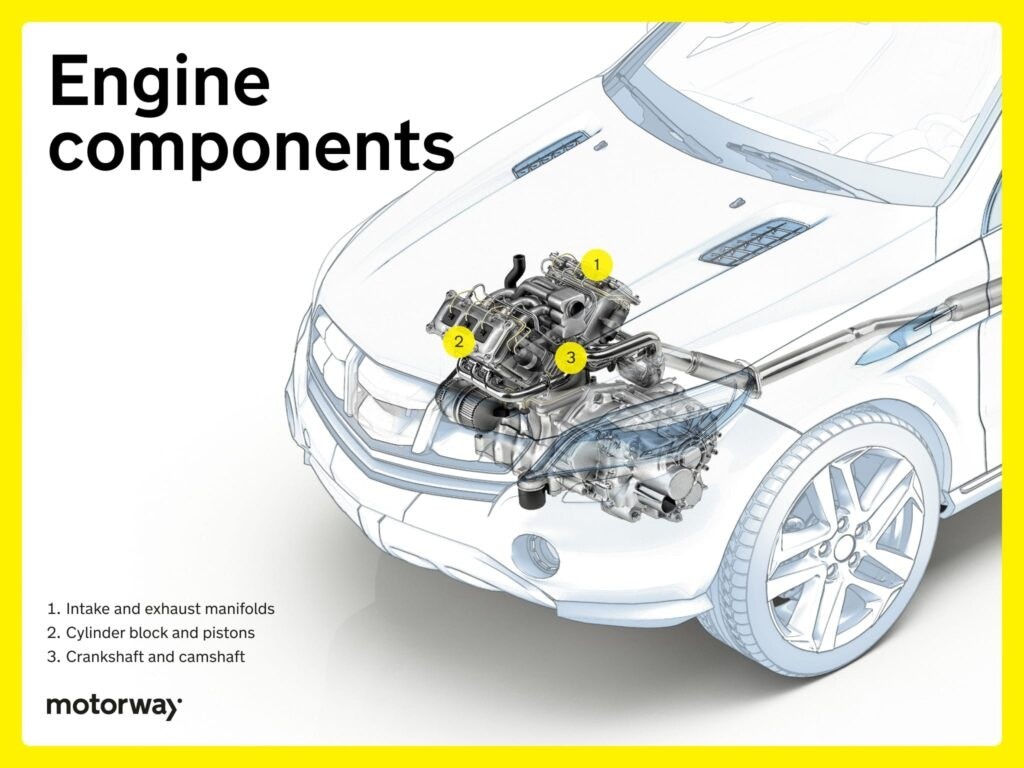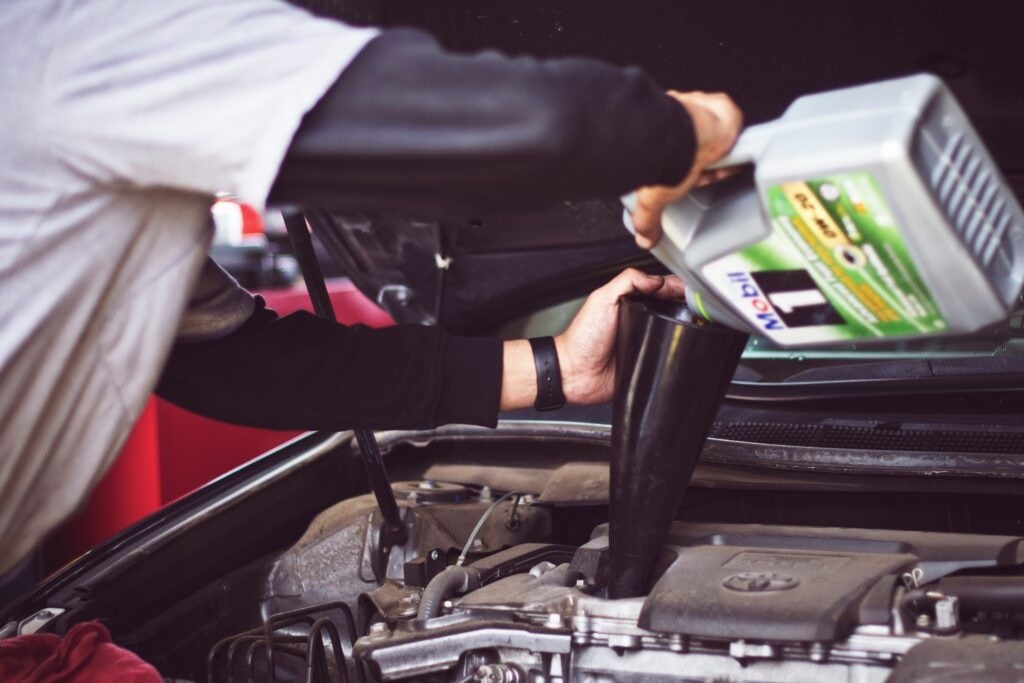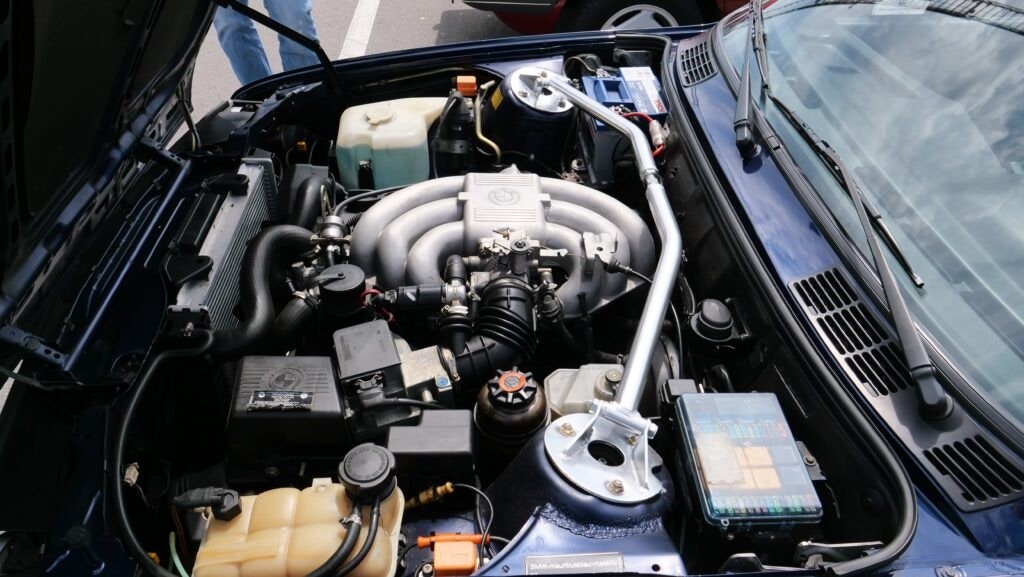Replacing a head gasket is a critical engine repair, and at HOW.EDU.VN, we understand the importance of knowing the costs involved to protect your vehicle’s engine and overall performance. This article provides an in-depth look at the factors influencing the cost to replace a head gasket, helping you make informed decisions and understand the significance of expert consultation, because a blown head gasket can lead to serious engine damage, so it’s essential to understand the costs associated with repair. Contact HOW.EDU.VN today to connect with experienced professionals for personalized advice, ensuring your vehicle receives the best care and attention, addressing issues like engine overheating and exhaust smoke.
1. What is a Head Gasket and Why is Replacement Necessary?
The head gasket is a vital component in your car’s internal combustion engine, positioned between the engine block and the cylinder head. Its primary roles are sealing the combustion chamber and maintaining separate passages for coolant and oil.
1.1 Functions of the Head Gasket
- Sealing: The head gasket prevents coolant and oil from leaking into the cylinders, ensuring proper combustion.
- Compression: It maintains the high combustion pressures needed for efficient engine operation.
1.2 Consequences of a Damaged Head Gasket
A compromised head gasket can lead to various engine problems, including:
- Engine Overheating: Coolant leaks can cause the engine to overheat, leading to further damage.
- Loss of Power: Reduced compression affects engine performance and power output.
- Engine Failure: If left unaddressed, a blown head gasket can result in catastrophic engine failure.
1.3 The Importance of Timely Replacement
Replacing a head gasket promptly is crucial to prevent extensive engine damage and maintain vehicle reliability. Neglecting this issue can lead to more costly repairs down the line.
2. Identifying a Blown Head Gasket: Key Warning Signs
Recognizing the symptoms of a blown head gasket is essential for timely intervention. Here are common indicators:
2.1 Common Symptoms
- Engine Overheating: Sudden spikes in temperature and coolant loss without visible leaks.
- Exhaust Smoke: White smoke (coolant burning) or blue-grey smoke (oil combustion) from the exhaust pipe.
- Discolored Oil: Milky appearance on the dipstick due to coolant contamination in the oil.
- Bubbles in Radiator: Visible air bubbles in the radiator when the engine is running.
- External Leaks: Coolant or oil leaks around the engine, particularly near the head gasket.
- Poor Engine Performance: Reduced power and acceleration.
- Sweet Exhaust Smell: Indicating coolant burning in the engine.
- Unusual Sounds: Hissing or gurgling noises from the coolant system.
- White Residue on Oil Cap: Mayonnaise-like substance indicating coolant mixing with engine oil.
2.2 Immediate Actions to Take
If you observe any of these signs, take the following steps:
- Check Coolant and Oil Levels: Monitor for any unusual loss or contamination.
- Consult a Mechanic: Seek professional diagnosis to confirm the issue.
- Avoid Driving: Minimize driving to prevent further engine damage.
2.3 Case Study: Diagnosing a Head Gasket Issue
Consider a case where a car owner noticed their engine overheating frequently and found a milky substance on the oil cap. A mechanic diagnosed a blown head gasket, preventing potential engine failure through timely replacement.
3. Factors Influencing the Cost of Head Gasket Replacement
Several factors determine the overall cost of replacing a head gasket. Understanding these can help you anticipate expenses and make informed decisions.
3.1 Gasket Type
- Multi-Layer Steel (MLS) Gaskets: Known for enhanced durability and sealing, MLS gaskets are more expensive due to their robust construction.
- Composite Gaskets: Made from a blend of materials, composite gaskets are more cost-effective but may require more frequent replacement.
3.2 Damage Severity
- Minor Issues: Localized leaks may require small, targeted repairs at lower costs.
- Severe Damage: Complete gasket failure necessitates comprehensive replacement, involving additional parts and labor, driving up the overall cost.
3.3 Car Manufacturer
The make and model of your vehicle can significantly influence the cost of a head gasket replacement. Different manufacturers have varying part prices and labor requirements.
3.4 Labor Costs
Mechanic labor costs contribute significantly to the overall expense. These costs depend on the complexity of the job, the mechanic’s expertise, and regional labor rates.
3.5 Additional Costs
- Engine Inspection Fees: Thorough inspections to identify all issues.
- Coolant and Oil Flushes: Essential for maintaining engine health.
- Replacement of Related Components: Thermostat or water pump replacement may be necessary.
3.6 Type of Car
| Car Type | Gasket Type | Labor Hours |
|---|---|---|
| Economy Car | Composite | 8-12 |
| Luxury Sedan | Multi-Layer Steel | 10-15 |
| Sports Car | High-Performance MLS | 12-18 |
| Truck/SUV | Heavy-Duty Composite | 14-20 |
| Electric Vehicle | N/A | N/A |



4. Average Head Gasket Replacement Costs by Car Manufacturer
Here’s a table illustrating average head gasket replacement costs for various car manufacturers in the UK:
| Car Manufacturer | Average UK Head Gasket Replacement Cost |
|---|---|
| Audi | £800 to £1,500 |
| BMW | £800 to £1,500 |
| Ford | £500 to £1,200 |
| Honda | £600 to £1,300 |
| Land Rover | £1,200 to £2,500 |
| Mercedes-Benz | £1,000 to £2,000 |
| Nissan | £400 to £1,000 |
| Toyota | £400 to £1,000 |
| Vauxhall | £500 to £1,200 |
| Volkswagen | £600 to £1,300 |
4.1 Regional Cost Variations
Replacement costs can vary by region due to differences in labor rates and parts availability. Urban areas typically have higher labor costs than rural areas.
4.2 Expert Insight: How to Get Accurate Estimates
To obtain an accurate estimate, provide your mechanic with detailed information about your car’s make, model, and the symptoms you’ve observed. Request a comprehensive assessment and breakdown of costs.
5. DIY Head Gasket Replacement: A Detailed Guide
Replacing a head gasket yourself is possible but requires significant mechanical skill and experience. Proceed with caution to avoid further engine damage.
5.1 Essential Tools and Materials
- Socket Set: Various sizes for removing and tightening bolts.
- Torque Wrench: For accurate bolt tightening according to manufacturer specifications.
- Head Gasket Set: Includes the new head gasket and related seals.
- Coolant and Oil: For refilling after the replacement.
- Cleaning Supplies: For cleaning engine surfaces.
5.2 Step-by-Step Procedure
- Engine Disassembly: Remove components to access the damaged head gasket, including the cylinder head, timing belt, and camshaft.
- Cleaning and Inspection: Thoroughly clean engine surfaces and inspect for additional damage.
- Gasket Removal: Carefully detach the old head gasket, ensuring all remnants are cleared.
- Surface Preparation: Smooth and clean cylinder head and engine block surfaces for proper sealing.
- New Gasket Installation: Delicately insert the new head gasket, aligning it with engine components.
- Reassembly: Reattach cylinder head, camshaft, timing belt, and other components in reverse order.
- Tightening and Torquing: Follow manufacturer specifications for accurate bolt torquing.
- Fluid Replacement: Refill coolant and oil, and perform necessary flushes.
- Testing: Conduct compression tests and check for leaks to verify effectiveness.
5.3 Potential Risks and Challenges
- Engine Damage: Incorrect installation can lead to severe engine damage.
- Time Commitment: The process can be time-consuming and labor-intensive.
- Lack of Expertise: Without proper knowledge, critical steps may be missed or done incorrectly.
5.4 Recommendation: When to Seek Professional Help
If you lack confidence or experience in engine repairs, seeking professional help is advisable to ensure the job is done correctly and safely.
6. Cost-Saving Strategies for Head Gasket Repair
There are several ways to minimize the cost of head gasket repair without compromising the quality of the work.
6.1 Routine Maintenance
- Regular Inspections: Detect issues early through scheduled engine inspections.
- Proactive Repairs: Address minor leaks promptly to prevent escalation.
6.2 Best Driving Practices
- Responsible Driving: Avoid harsh acceleration and deceleration to reduce engine stress.
- Quality Coolant: Use high-quality coolant to prevent corrosion.
6.3 Monitoring and Prevention
- Coolant Levels: Keep an eye on coolant levels and address leaks swiftly.
- Engine Warm-Up/Cool-Down: Allow the engine to warm up before driving hard and cool down before turning off.
- Avoid Overheating: Address cooling system issues and avoid prolonged high temperatures.
6.4 Professional Maintenance
- Qualified Professionals: Entrust major engine work to qualified professionals for proper installation.
6.5 Exploring Used Parts
- Salvage Yards: Consider used parts for cost savings, but ensure they are in good condition and compatible with your vehicle.
6.6 Negotiating with Mechanics
- Multiple Quotes: Obtain quotes from several mechanics to compare prices.
- Negotiate Rates: Discuss labor rates and potential discounts.
7. Repairing vs. Replacing: Making the Right Decision
Deciding whether to repair or replace a head gasket depends on several factors.
7.1 Assessing Damage Extent
- Minor Issues: Small leaks may be repairable with sealants.
- Extensive Damage: Complete gasket failure typically requires replacement.
7.2 Considering Vehicle Age and Condition
- Older Cars: Replacement might offer a temporary solution to an aging engine.
- Newer Cars: Repairing may be more cost-effective for newer vehicles in good condition.
7.3 Comparing Costs
- Repair Costs: Evaluate the cost of repairs versus the vehicle’s current market value.
- Replacement Costs: Factor in professional labor and additional parts.
7.4 Seeking Professional Advice
- Mechanic Consultation: Obtain a professional opinion on the best course of action based on your vehicle’s specific condition.
8. The Role of Coolant in Head Gasket Health
Coolant plays a crucial role in maintaining the health and integrity of the head gasket.
8.1 Importance of Quality Coolant
- Corrosion Prevention: High-quality coolant prevents corrosion, protecting the head gasket.
- Temperature Regulation: Effective coolant maintains optimal engine temperature, reducing stress on the gasket.
8.2 Types of Coolant
- Conventional Coolant: Traditional coolant requiring frequent replacement.
- Extended Life Coolant (ELC): Offers longer protection intervals and better corrosion resistance.
- Hybrid Organic Acid Technology (HOAT): Combines organic and inorganic additives for enhanced performance.
8.3 Maintaining Proper Coolant Levels
- Regular Checks: Monitor coolant levels to prevent overheating and gasket damage.
- Leak Detection: Address coolant leaks promptly to maintain engine health.
9. The Impact of Overheating on Head Gaskets
Overheating is a primary cause of head gasket failure. Understanding the effects of overheating can help prevent damage.
9.1 Causes of Overheating
- Coolant Leaks: Low coolant levels lead to overheating.
- Faulty Thermostat: A malfunctioning thermostat can cause temperature regulation issues.
- Radiator Problems: Blocked or damaged radiators reduce cooling efficiency.
9.2 Effects of Overheating
- Gasket Damage: High temperatures cause the head gasket to expand and weaken.
- Engine Damage: Prolonged overheating leads to severe engine damage.
9.3 Preventing Overheating
- Regular Maintenance: Ensure the cooling system is in good condition.
- Temperature Monitoring: Watch for temperature spikes and address them immediately.
- Driving Habits: Avoid prolonged periods of high-speed driving in hot weather.
10. How to Find a Reliable Mechanic for Head Gasket Replacement
Finding a trustworthy mechanic is essential for a successful head gasket replacement.
10.1 Seeking Recommendations
- Friends and Family: Ask for recommendations from trusted sources.
- Online Reviews: Check online reviews and ratings of local mechanics.
10.2 Checking Credentials
- Certifications: Look for mechanics with certifications from reputable organizations.
- Experience: Choose a mechanic with extensive experience in engine repairs.
10.3 Obtaining Multiple Quotes
- Price Comparison: Get quotes from several mechanics to compare prices.
- Detailed Estimates: Ensure the estimates include a breakdown of costs.
10.4 Asking the Right Questions
- Experience: Inquire about the mechanic’s experience with head gasket replacements.
- Warranty: Ask about warranty coverage for parts and labor.
- References: Request references from previous customers.
11. Long-Term Engine Care After Head Gasket Replacement
Proper engine care following a head gasket replacement is crucial to ensure longevity and prevent future issues.
11.1 Regular Maintenance Schedule
- Oil Changes: Adhere to the manufacturer’s recommended oil change intervals to maintain engine lubrication and cleanliness.
- Coolant Flushes: Periodically flush the cooling system to remove contaminants and maintain optimal coolant performance.
- Inspection of Hoses and Belts: Regularly inspect hoses and belts for wear and tear, replacing them as needed to prevent leaks and overheating.
11.2 Monitoring Engine Performance
- Temperature Gauge: Keep a close eye on the temperature gauge while driving to detect any signs of overheating early on.
- Fluid Levels: Regularly check fluid levels, including coolant and oil, to ensure they are within the recommended ranges.
- Listening for Unusual Noises: Pay attention to any unusual noises coming from the engine, such as knocking or hissing, which could indicate potential problems.
11.3 Driving Habits
- Avoid Overloading: Refrain from overloading the vehicle, as this can put excessive strain on the engine and cooling system.
- Smooth Acceleration and Deceleration: Practice smooth acceleration and deceleration to minimize stress on engine components.
- Proper Warm-Up and Cool-Down: Allow the engine to warm up before driving aggressively and cool down after long drives to prevent thermal stress.
11.4 Professional Check-Ups
- Annual Inspections: Schedule annual inspections with a trusted mechanic to assess the overall health of the engine and address any potential issues proactively.
- Diagnostic Scans: Perform diagnostic scans periodically to identify hidden problems that may not be apparent through visual inspection.
12. The Benefits of Professional Consultation at HOW.EDU.VN
Seeking professional advice from HOW.EDU.VN offers numerous advantages for head gasket replacement and engine care.
12.1 Access to Expert Knowledge
- Experienced Professionals: Benefit from the knowledge of seasoned mechanics and engine specialists.
- Accurate Diagnosis: Receive precise diagnoses to address the root cause of the issue.
12.2 Personalized Advice
- Customized Solutions: Get tailored recommendations based on your vehicle’s specific needs and condition.
- Informed Decisions: Make informed decisions about repair or replacement options.
12.3 Cost-Effective Solutions
- Preventative Measures: Learn proactive measures to avoid costly future repairs.
- Optimized Maintenance: Implement efficient maintenance strategies to prolong engine life.
12.4 Support and Guidance
- Ongoing Support: Receive continuous support and guidance throughout the repair process.
- Peace of Mind: Gain peace of mind knowing your vehicle is in expert hands.
13. Real-World Examples: Head Gasket Replacement Case Studies
Examining real-world examples provides valuable insights into the head gasket replacement process and its outcomes.
13.1 Case Study 1: Preventative Replacement
- Scenario: A vehicle owner noticed early signs of a head gasket leak and sought professional advice.
- Solution: A mechanic recommended preventative replacement, avoiding more extensive engine damage.
- Outcome: The vehicle’s engine was restored to optimal performance, preventing costly future repairs.
13.2 Case Study 2: Overheating Damage
- Scenario: A car overheated due to a faulty cooling system, leading to head gasket failure.
- Solution: The head gasket was replaced, along with cooling system repairs.
- Outcome: The engine was successfully repaired, but the owner incurred additional costs due to the overheating damage.
13.3 Case Study 3: DIY Missteps
- Scenario: A vehicle owner attempted a DIY head gasket replacement without proper experience.
- Solution: The owner sought professional help after encountering difficulties.
- Outcome: The mechanic corrected the errors, but the owner incurred higher costs due to the initial missteps.
14. Frequently Asked Questions (FAQs) About Head Gasket Replacement
Here are some frequently asked questions about head gasket replacement to provide further clarity.
14.1 Is it Worth Fixing a Blown Head Gasket?
Repairing a blown head gasket is worthwhile if the damage is minimal, but extensive issues may warrant a full replacement for long-term reliability.
14.2 Is Changing a Head Gasket a Big Job?
Changing a head gasket is complex, involving engine disassembly and precise reassembly. It requires skilled labor and can be a substantial undertaking.
14.3 What is the Engine Life After a Head Gasket Replacement?
The service life of an engine after head gasket replacement depends on vehicle maintenance, driving conditions, and the extent of prior engine damage.
14.4 Does a Head Gasket Sealer Work?
Head gasket sealers offer a temporary fix for minor leaks but are not a permanent solution.
14.5 How Long Does it Take to Replace a Head Gasket?
The replacement process typically takes 8 to 12 hours, depending on the vehicle and the mechanic’s experience.
14.6 Can I Drive with a Blown Head Gasket?
Driving with a blown head gasket can cause further engine damage and is not recommended.
14.7 What Happens if I Don’t Replace My Head Gasket?
Failure to replace a blown head gasket can lead to severe engine damage, overheating, and eventual engine failure.
14.8 How Often Should I Replace My Head Gasket?
Head gaskets typically last 100,000 to 150,000 miles, but this can vary based on driving conditions and maintenance.
14.9 What Are the Common Causes of Head Gasket Failure?
Common causes include overheating, coolant leaks, and general wear and tear.
14.10 How Can I Prevent Head Gasket Problems?
Preventative measures include regular maintenance, using high-quality coolant, and avoiding overheating.
15. Connect with Experts at HOW.EDU.VN for Personalized Assistance
Don’t let head gasket issues compromise your vehicle’s performance and safety. At HOW.EDU.VN, we connect you with leading experts who provide tailored advice and solutions.
15.1 Why Choose HOW.EDU.VN?
- Access to Top Professionals: Connect with over 100 renowned PhDs and specialists worldwide.
- Personalized Consultation: Receive in-depth, customized advice for your specific needs.
- Time and Cost Savings: Save time and money by receiving expert guidance promptly.
- Confidential and Reliable: Ensure privacy and trust in all consultations.
- Practical Solutions: Get actionable advice that you can implement immediately.
15.2 How to Get Started
- Visit Our Website: Go to HOW.EDU.VN to explore our services.
- Submit Your Question: Describe your issue and provide relevant details.
- Connect with an Expert: Get matched with a professional who can assist you.
- Receive Expert Advice: Obtain personalized guidance and solutions.
15.3 Contact Information
For immediate assistance, reach out to us:
- Address: 456 Expertise Plaza, Consult City, CA 90210, United States
- WhatsApp: +1 (310) 555-1212
- Website: HOW.EDU.VN
Don’t wait—connect with the experts at HOW.EDU.VN today and ensure your vehicle receives the best care. Contact us now to address any concerns and keep your engine running smoothly!
A blown head gasket can lead to serious engine damage, so it’s essential to understand the costs associated with repair. At how.edu.vn, we are dedicated to providing reliable guidance and connecting you with experienced professionals for personalized advice, ensuring your vehicle receives the best care and attention. Addressing issues like engine overheating and exhaust smoke becomes straightforward with our expert network.
